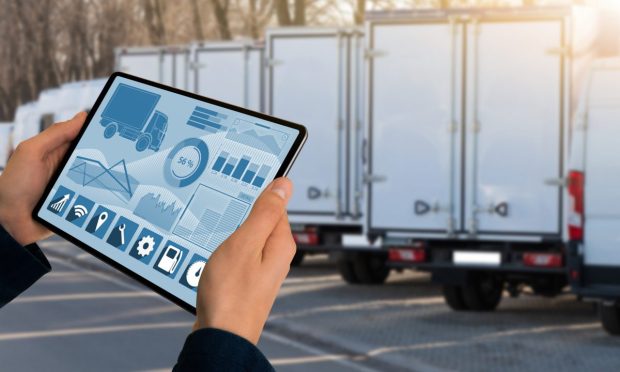From Maintenance to Payments to Software, Digital Connectivity Makes Fleet Mgmt Fast and Efficient

Today’s commercial fleets are looking to automakers and their dealers for not only vehicles, service and financing, but also software and electric-vehicle charging — all with the aim of improving their vehicles’ uptime so they can do the jobs they’re meant to do.
The opposite of uptime — downtime — is the third largest cost of running a fleet, behind only the costs of depreciation and fuel, Hans Schep, general manager, Ford Pro Europe at Ford Motor Co., said Tuesday (March 8) at the Jefferies Spring Automotive Conference.
“That’s why it’s so important that we’re launching all these service capabilities with FORDLiive and Mobile Service, etc., etc., to keep your vehicle on the road,” Schep said.
Ford Pro is a business unit within Ford Motor Co. that focuses on the commercial vehicle business. Last year, Ford took what it had learned in Europe and rolled Ford Pro out globally — “basically giving our customers acceleration of productivity,” Schep said.
Using Connectivity to Reduce Vehicle Downtime
To reduce the problem of downtime, Ford launched FORDLiive, a service that uses real-time data from connected vehicles to notify the operator when service is recommended and when the vehicle is subject to a recall. This connected service also helps the dealer diagnose any issues faster and order parts ahead of the vehicle’s arrival in the service bay.
FORDLiive was launched in March 2021 and then rolled out in several European markets. It is available free of charge to all operators of Ford connected commercial vehicles in those countries.
“All our vehicles have modems in them since three years now, and that’s giving us tremendous results,” Schep said. “So, we’ve reduced the downtime of our customers by over 50% using this.”
Integrating EV Charging into a Payment System
Another challenge for fleet operators is the transition from internal combustion engine (ICE) vehicles to battery electric vehicles (BEVs). Schep said the operators commonly have many questions around where to charge the vehicles, what kind of software is available to manage the charging and how the charging is billed.
“There’s so many questions that we now know how to answer for our customers,” Schep said. “So, ICE to BEV consultancy is also one of the key things that Ford Pro brings. So, it’s a fantastic journey. We can wrap our arms around our customer in their journey to electrification and keep their productivity going.”
To help on that journey, Ford acquired a company that develops specific depot charging software that makes sure all of a fleet’s vehicles are charged and ready when needed while using charging patterns that reduce cost and don’t overload the grid.
“It’s also got an integral offering with home charging and public charging that we integrate in our payment system,” Schep said. “So, everything you need, dependent on the use case and where your drivers live, we can offer you at the lowest cost possible, all integral and one bill, if you need that, to not spend any time on admin and make things really easy.”
Focusing on Keeping Vehicles on the Road
Together, these add up to ways to give fleets what they need: uptime. Schep said that five or six years ago, a quality meeting at the Ford commercial vehicles department would have centered on reducing warranty costs or other costs. Today, these meetings look at how many customer vehicles are off the road and what Ford can do about it — with parts, technicians or an alternate vehicle.
“It’s a totally different mindset that we now have, and that’s actually given us the opportunity to extend our leadership,” Schep said.
